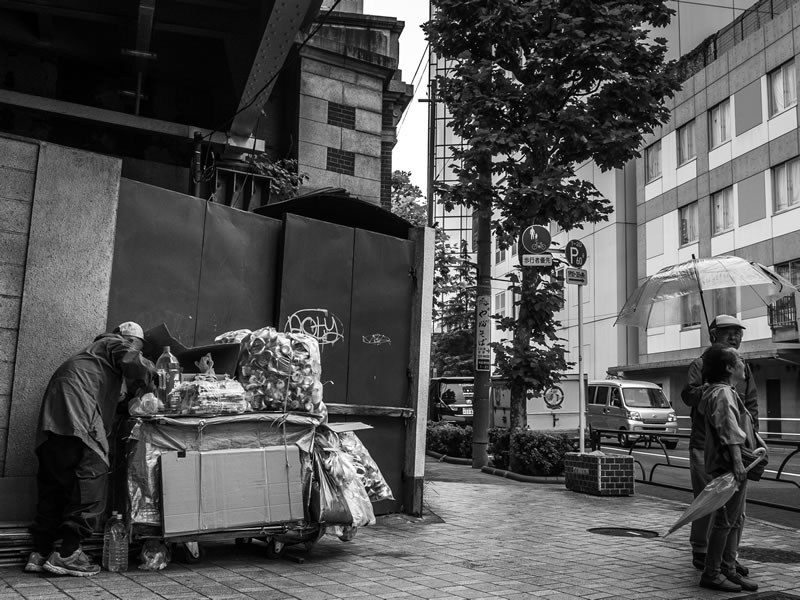
If you talk with those standing and selling “The Big Issue” in the western entrance of Shinjuku Station they will tell you with certainty that the numbers given by the Ministry of Health, Labor and Welfare are deceitfully small: it is impossible that the biggest metropolis in the world has less than 2000 homeless people and that the whole country has 7500. Hey will probably be right since they are also homeless themselves and selling the magazine is one of the opportunities the have to work and make the little money they need so they can live in one of the cardboard boxes they lay out carefully every night in the underground passages and the bridges around the station. But even if they are indeed right and the numbers are twice that big they are still very few compared to the size of Tokyo and Japan: 5000 people out of 13 million and 15.000 out of 130? Is it possible?
It is especially considering that until the burst of the 1990s bubble these numbers might even be two orders of magnitude lower; in plain English, up until the late 1980s, the homeless in Japan were, by all accounts, a few tens. The lifelong financial assurance that came with getting hired by a company (and the provision of housing it frequently involved) as well as the guarantee of social standing that accompanied said hiring, promised the average Japanese a steady income allowing them to plan their life in the certainty that they would never need to worry about such staples as a roof over their head, food on their table or medical care (pension is another matter and a problem as much then as it is today). But the bubble changed all that proving that the only thing hovering in the air was not real estate prices but also the illusion of stability.
The Japanese up until the years of Edo knew that, hence the “floating world” (or “ukiyo/浮世”) they used to describe their era and to which this column owes its name. As did their descendants who lived during the war –but they probably forgot it when they went through the postwar reconstruction and the “Japanese miracle”. And when the bubble burst, came the firings, the age discrimination became worse and several thousands of people realized that the only way to keep the dignity of their family was to self-exile from its life. And this was probably the birth of the cardboard favelas that, like a magic picture appear every night and disappear every morning, when the middle-aged and elderly homeless go to collect tin cans or do some other temporary job that allows them to live and, occasionally contribute to the budget of their families, still living in the homes they built together, before the bubble.
Grigoris A. Miliaresis is a journalist and translator. He has worked for many newspapers, magazines and publishing houses and specializes in the Internet, the martial arts and Japan where he has been living for the last few years.